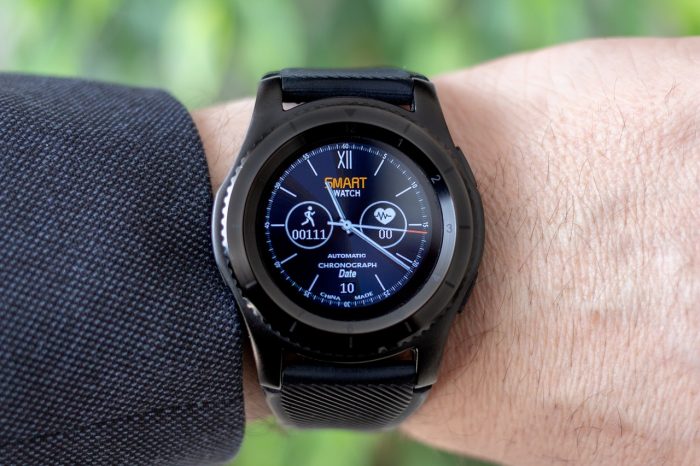
How many steps are there in one mile? In practice, the answer to this question is much more complex than it sounds, as it involves many variables, such as if one is running or walking, and the body size of the individual in question. That said, on average it takes about 2000 to 2500 walking steps to cover a mile, and between 1400 to 1700 running steps to cover a mile. Note that these average assume an average body size, as an individual’s height/body size will affect these numbers. Let’s take a close look at the relationship between running/walking to covering a mile, as well as how an individual’s body size impacts this process.
How Long Is A Mile?
Before we get into how many steps are in a mile, let’s first cover the definition of a mile and specify the distance we are talking about. A mile is a unit of length measurement created by the English measurement system. In terms of feet, there are 5280 feet in a mile, while there are also 1760 yards in a mile. A mile is larger than a kilometer, as an international agreement has specified that there are roughly 1609.344 meters in a mile. Most countries on Earth make use of the kilometer for measuring distance, as specified by the International Systems of Units. However, the internationally recognized mile still sees use in the United States, the United Kingdom, Myanmar, and Liberia, to name a few countries.
While this article will be dealing with the internationally recognized and standardized mile, it is important to be aware of the fact that there are some different versions of the mile out there. For instance, in the US there is the survey mile, which is defined as 5280 feet or around 1609.347 meters in length. The difference between the US survey mile and the international mile is usually negligible, being a difference of about 0.000002 miles between the survey mile and the international mile.
However, there is a significant difference between regular miles and nautical miles. The nautical mile is approximately 6,082 feet or 1853 meters in the US, with the UK nautical mile being just slightly smaller. Nautical miles are primarily used to track distance between points on latitude on the ocean. Other types of miles include the geographical mile, used to keep track of the length of a meridian of latitude, and the metric mile (denoting a distance of 1500 meters, used in track and field athletics).
How Many Steps In A Mile?

Photo: sasint via Pixabay, CC0
On average, an individual must take somewhere between 2000 to 2500 steps to cover a mile, as tracked by a pedometer. Naturally, this means that if you were involved in a 5-mile hike, you would take somewhere between 10,000 to 12,500 steps. When you are running/sprinting, there is a longer stride in between your steps so this distance can decrease to somewhere around 1400 to 1700 steps a mile. While the exact number of steps in a mile will vary due to the stride length of the individual in question, what follows are some handy heuristics you can use to estimate the number of steps you have to take when covering a mile.
At least one research study has found numbers around these benchmarks for steps per mile:
- 2250 steps per mile assuming it takes you 20 minutes to cover a mile (this means you are walking three miles per hour).
- 1950 steps per mile assuming it takes you 15 minutes to cover a mile (this means you are walking four miles an hour).
- 1950 steps per mile assuming it takes you 12 minutes to cover a mile (this means you are running 5 miles an hour).
- 1700 steps per mile assuming it takes you 10 minutes to cover a mile (this means you are running 6 miles an hour).
- 1400 steps per mile assuming it takes you 8 minutes to cover a mile (this means you are running 7.5 miles an hour).
Using these averages, we can estimate distance covered when given a certain number of steps taken:
- 3000 steps means: walking 1.3 miles, jogging 1.5 miles, running 1.8 miles and quickly running 2.1 miles.
- 5000 steps means: walking 2.2 miles, jogging 2.6 miles, running 2.9 miles and quickly running 3.6 miles.
- 7000 steps means: walking 3.1 miles, jogging 3.6 miles, running 4.1 miles and quickly running 5.0 miles.
- 12000 steps means: walking 5.3 miles, jogging 6.2 miles, running 7.1 miles and quickly running 8.6 miles.
- 20000 steps means: walking 8.9 miles, jogging 10.3 miles, running 11.8 miles and quickly running 14.31 miles.
What About Height?
It’s also important to take your height into consideration. One heuristic used is that stride length is about 42% of an individual’s height, and although this estimate is only roughly accurate it can still be used to make some informative guesses about how your height impacts the number of steps per mile you will take.
- If your height is: 4’ 10’’ you’ll be taking about 2,601 steps per mile.
- If your height is: 5’0’’ you’ll be taking about 2,557 steps per mile.
- If your height is:5’2’’ you’ll be taking about 2,433 steps per mile.
- If your height is: 5’4’’ you’ll be taking about 2,357 steps per mile.
- If your height is: 5’6’’ you’ll be taking about 2,286 steps per mile.
- If your height is: 5’8’’ you’ll be taking about 2,218 steps per mile.
- If your height is: 5’10’’ you’ll be taking about 2,215 steps per mile.
- If your height is: 6’0’’ you’ll be taking about 2,095 steps per mile.
If using these estimates/averages isn’t enough for you and you’d like to get more exact, you can make some measurements of your own and use them to extrapolate your own custom mile.
Measuring Your Own Steps Per Mile
There are many different methods of measuring your own number of steps per mile, but all of the different methods have their own pros and cons. For this reason, you’ll probably want to take multiple measurements of your own steps per mile and average them together to get the most complete picture. When calculating your steps per mile, you can get a pedometer, download a pedometer app on your phone, or simply count your number of steps in your head.

Photo: ArturLuczka via Pixabay, CC0
Using Apps: There are a variety of apps out there that will both log your steps and measure the distance of a mile, utilizing the GPS in your phone. Be warned, however, that the GPS of a phone can often fluctuate, being off by 10% sometimes. To increase the accuracy of your GPS calculation, find a place that is as wide and open as possible, with as few twists and turns a possible and as few trees, buildings, and hills as possible. The GPS signal must travel between your phone and satellite and surrounding objects can throw off the accuracy of the GPS.
Using A Track: Using a track to chart your mile is handy because regulation quarter-mile tracks have markings that you can use. These tracks are frequently found at schools/colleges/and recreation/fitness centers. When measuring your pace, you’ll want to walk only on the inside lane and log your steps. If it’s a quarter mile track than you’ll want to go around four times. (Though you could just go around once and multiply your result by four.) If it is a 400-meter track, you will need to do the track four times and then multiply your number of steps by 1.009.
Using A Football Field: You can also use a football field to measure your steps per mile. From one goal line to the other goal line a football field is exactly 300 feet long, but be sure to log your steps as you walk or run from one goal line to the other goal line. Once you are done, multiply your resulting steps by 17.6, and this is your number of steps per mile.
Using A Mapping Site: There are various online mapping sites that will give you a map of a mile in your local area. You can then head to the area that your chosen mapping website has given you, and walk that area with an odometer. For the best accuracy, you want to make sure the course is straight as possible with as few curves as possible.
Using Measuring Tape And Chalk: You can also use a measuring tape and either some masking tape or piece of chalk to calculate your steps and stride length. Start off by using the tape measure and the masking tape or chalk and measuring a distance of 20 feet, 30 feet, etc. Just choose a distance and mark it off several times. Begin walking about 10 feet before making an initial mark. The reason you want to give yourself some distance before starting your count is that this helps you build up to your natural walking speed. When you have hit the first mark you should start logging your steps, and when you reach the second mark stop counting. You now need to take the number of feet you measured and divide that number by the number of steps it took you to cover the distance from the first mark to the second mark. As an example, if you cover 20 feet in 16 steps, your estimated step length is 1.25 feet. You can then divide your estimated step length into feet in a mile to get your estimated steps per mile.
Using Stride Length To Get Steps Per Mile

Photo: sweetlouise via Pixabay, CC0
An alternate method of calculating steps per mile is using your stride length. Average stride length for men is about 2.5 feet and about 2.2 feet for women, however, it ultimately comes down to the individual’s height. The advantage of using your stride length to calculate your steps per mile is that it is typically more accurate than your personal steps per mile. Your stride length is the distance that a single leg travels forward when you are walking. In other words, it is the distance from the heel print of one foot to the other foot’s heel print. The length of your stride will be dependent on different factors – whether you are running or walking, and whether you are on a smooth paved trail or rough hill, etc.
Measuring your stride length can be done with the methods described above, such as walking a football field and using the following equations:
Stride length in feet = 300/step count.
Stride length in inches = 3600/step count.
Once you know your stride length, you can divide the mile by stride length. Just take 5280 and divide it by your own personal stride length in feet. Note that most odometers will have you enter your stride length during your initial set up, automatically calculating the distance based off of your personal stride length/step count.









